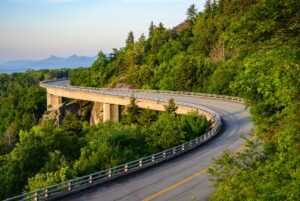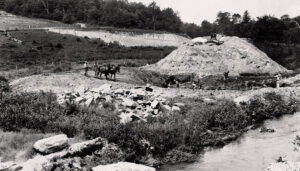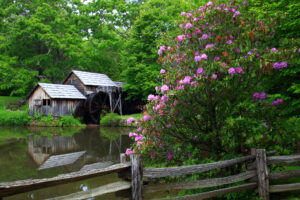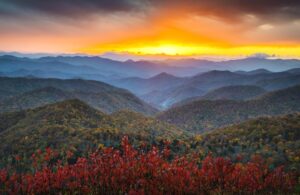
The Blue Ridge Parkway is a scenic roadway that stretches for 469 miles (755 kilometers) along the crest of the Blue Ridge Mountains in the eastern United States. It is often referred to as “Americas’ Favorite Drive” and is one of the most visited units of the National Park system.

Construction of the Blue Ridge Parkway began in 1935 as a public works project during the Great Depression and was completed in 1987. The parkway connects Shenandoah National Park in Virginia with the Great Smoky Mountains National Park in North Carolina and Tennessee, offering stunning views of the Appalachian Mountains, rolling hills, forests and numerous natural and cultural attractions.

The parkway is renowned for its scenic beauty with countless overlooks, hiking trails, and recreational opportunities. It passes through diverse ecosystems, including forests of oak, hickory, and pine. Visitors can enjoy a variety of outdoor activities such as hiking, camping, picnicking, wildlife watching, fishing, cycling.

Along the parkway, there are several visitor centers, campgrounds, picnic areas, and historic sites. These include the Blue Ridge Music Center, where visitors can experience traditional Appalachian music, and the Folk Art Center, which showcases the work of local artisans. Other notable stops include Mabry Mill, an iconic gristmill that is a popular photography spot, and Linville Gorge, often referred to as the “Grand Canyon of the East”.

The Blue Ridge Parkway is also known for it’s vibrant fall foliage. Attracting numerous visitors during the autumn months when the leaves change colors. The parkway offers breathtaking vistas of red, orange, and yellow foliage, creating a picturesque landscape.

It’s important to note that the Blue Ridge Parkway is a national park unit and is subject to the rules and regulations of the National Park Service. Visitors are encouraged to check for any closures, weather conditions, or other important information before planning a trip to ensure a safe and enjoyable experience.



